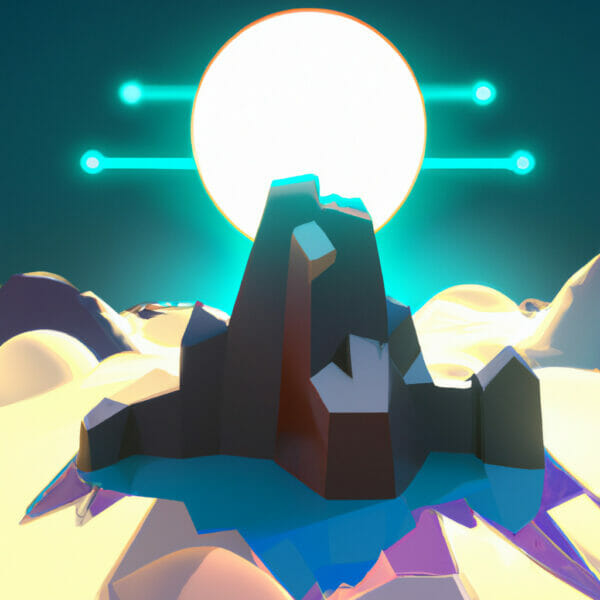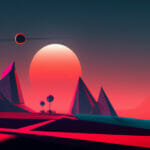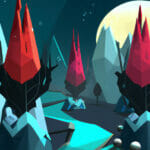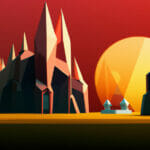In the vast and exciting world of game development, creating immersive and dynamic environments is key for a memorable player experience. Today, we’ll venture into the world of terrain generation in Roblox, a game development platform that’s taken the world by storm. Popular for being user-friendly yet remarkably dynamic, Roblox offers comprehensive tools for coding unique and engaging game mechanics, one of them being terrain generation.
Table of contents
What is Terrain Generation in Roblox?
Roblox terrain generation is all about creating landscapes for your games dynamically. With this tool, you can develop anything from sandy deserts to towering mountains and lush grasslands. Essentially, terrain generation is the art of crafting the game world where your players will engage with your game mechanics.
Why Learn Terrain Generation?
Why should you bother learning terrain generation in Roblox? Many reasons contribute to the value of this skill set:
- Immersive Gaming Experience: Good terrain can turn a good game into a fantastic one. It adds depth, variety, and realism to the gaming experience.
- Unleash Your Creativity: It allows for a high level of creativity. You are not just designing games, but the worlds they occupy.
- Highly sought skill: With the surge of interest in game development and particularly on platforms like Roblox, this is a highly sought-after skill in the industry.
Now that we know what terrain generation is and why it is an essential skill for Roblox game developers let’s dive into the coding tutorials.
Understanding Roblox Terrain
First, let’s cover some basics about the Roblox terrain. The Roblox Terrain object represents a voxel grid where each voxel represents a small block of space in the world. Each voxel has a Material, a numeric occupancy, and possibly water or some other fluid.
-- Retrieve the Terrain object of the Workspace
local Workspace = game:GetService("Workspace")
local Terrain = Workspace.TerrainIn this code snippet, we’ve simply retrieved the Terrain object of the workspace. We’ll work with this object to generate our terrain.
Creating Voxel Terrain
To create terrain, we need to fill specific voxels with materials. Here is an example of how to fill a voxel at a specific point with grass.
-- Point on the terrain where we want to add grass local Point = Vector3.new(10, 10, 10) Terrain:SetMaterial(Point, Enum.Material.Grass, 0, 0)
In this example, we’ve filled a voxel at the point (10,10,10) with grass. The voxel grid is defined in world space where each voxel corresponds to a 4x4x4 stud block in the world.
Creating a Region
A single voxel might not be enough. To develop a more extensive grassy field, we can use the Region3int16 object type, which describes a region of voxels.
-- Defining the region local LowerPoint = Vector3int16.new(0, 0, 0) local UpperPoint = Vector3int16.new(100, 0, 100) local Region = Region3int16.new(LowerPoint, UpperPoint) -- Filling the region with grass Terrain:FillRegion(Region, 4, Enum.Material.Grass)
In the above example, we define a rectangular region from (0,0,0) to (100,0,100) and fill it with grass using the FillRegion method. 4 is the voxel resolution: the calculation is based on a 4x4x4 stud block in the world.
Reading Terrain Data
Understanding the terrain involves retrieving data about it. To get data about a voxel at a specific location, use the GetMaterial method.
local VoxelMaterial = Terrain:GetMaterial(Point).Name
print("Voxel Material:", VoxelMaterial)In this snippet, we are printing the material of a voxel at a specific point. The output will differ depending on what material you’ve placed in the voxel at that point. This method is useful to verify the presence of specific terrain types on your game map.
Manipulating Existing Terrain
Not all terrain generation has to start from scratch. It’s also essential to learn how to manipulate existing terrain. A common method involves using the Terrain:ReadVoxels method, which returns a dictionary mapping materials to their densities for each voxel in a region.
-- Defining a region
local LowerPoint = Vector3int16.new(0, 0, 0)
local UpperPoint = Vector3int16.new(10, 10, 10)
local Region = Region3int16.new(LowerPoint, UpperPoint)
-- Reading the voxels
local VoxelDensities = Terrain:ReadVoxels(Region, 4)
-- Exploring the voxel densities
for Material, Densities in pairs(VoxelDensities) do
print("Material:", Material.Name)
for _, Density in ipairs(Densities) do
print(" Density:", Density)
end
endIn this example, we read the voxels from the region and print the material and density of each voxel. This method can be used to understand the materials and their densities in a defined region.
Building off our use of ReadVoxels, Terrain:WriteVoxels allows writing voxel data to a region.
-- Create a terrain map (dictionary mapping material types to density arrays)
local TerrainMap = {
[Enum.Material.Grass] = {4, 4, 4, 4, 4, 4, 4, 4, 4, 4}
}
-- Write the terrain map to a region
Terrain:WriteVoxels(Region, 4, TerrainMap)In this example, we are creating a terrain map filled with grass and then writing the voxel data to the region we defined earlier.
Eroding and Growing Terrain
Roblox also provides specific functions to erode and grow terrain features.
-- Eroding a region Terrain:Erode(Region, 4, Enum.TerrainMaterial.Brick) -- Growing in a region Terrain:Grow(Region, 4, Enum.TerrainMaterial.Grass)
The Erode method slowly removes material, simulating natural erosion. The Grow method does the opposite, slowly growing the specified material in the region.
By mastering these techniques, you can create dynamic and immersive terrain that will make your game stand out against the crowd. Roblox terrain generation is a powerful and creative tool that can redefine your gaming environments. Through Zenva’s courses, you can learn these and more skills to boost your game development repertoire. Learning at Zenva, you’ll be creating your dream game environments before you know it!
Creating Hills and Mounds
While flat terrains have their uses, adding dimension to your environment enhances the depth and realism. Let’s create a simple hill using the sine function with the FillBlock method.
-- Coordinates for the center and size of the hill
local Center = Vector3int16.new(50, 0, 50)
local Size = Vector3int16.new(50, 50, 50)
-- Loop over each point in the block
for X = -Size.X, Size.X do
for Z = -Size.Z, Size.Z do
-- Calculate the height using a sine function
local Height = math.sin(math.sqrt(X*X + Z*Z) / 10) * 10
-- Convert to integer
local HeightInt = math.floor(Height + 0.5)
-- Fill the hill with grass
for Y = -Size.Y, HeightInt do
local Point = Center + Vector3int16.new(X, Y, Z)
Terrain:SetMaterial(Point, Enum.Material.Grass, 0, 0)
end
end
endIn this script, we’re looping over every coordinate in a block and determining the height of the terrain at that point using a sine function that depends on the distance from the center. This creates a series of hills that ripple outwards from the center. The sine function causes these hills to gradually fall in and out, creating a smooth, natural look.
Creating Valleys and Caverns
We could also create valleys or caverns using Terrain:EmptyRegion, which empties a region, leaving it devoid of any materials.
-- Define the region to be emptied local LowerPoint = Vector3int16.new(50, -10, 50) local UpperPoint = Vector3int16.new(100, 0, 100) local Region = Region3int16.new(LowerPoint, UpperPoint) -- Empty the region Terrain:EmptyRegion(Region)
In this snippet, we empty a region to create a valley. You can create a cave system by emptying regions inside hills or mountains.
Creating Rivers and Oceans
To create bodies of water, you can use the Terrain:FillWater method. This method creates water within the specified region, flowing and colliding realistically with other objects in the world.
-- Define the region where you want the river local LowerPoint = Vector3int16.new(50, 0, 50) local UpperPoint = Vector3int16.new(100, -10, 100) local Region = Region3int16.new(LowerPoint, UpperPoint) -- Fill the region with water Terrain:FillWater(Region, 4)
In this snippet, we are filling a region with water. This can be used for creating rivers, lakes or oceans based on the size of the region and the terrain surrounding it.
The Region3int16.New takes two points as arguments. The first point should be more negative or equal to the second point across all coordinates (x, y and z). If a coordinate in the first point is more positive than the second point, it’ll produce an error.
Creating dynamic and immersive environments in Roblox requires a good understanding of all available tools and methods in the terrain generation module. The principles and techniques that we discussed in this tutorial will serve as a foundation for you to build upon, and to eventually design the landscapes of your dreams. Working with Zenva ensures you get the best training from experts dedicated to helping you get the most out of your learning experience.
What’s Next in Your Roblox Adventure?
The skills you’ve learned today on terrain creation and manipulation in Roblox serve merely as a cornerstone to the vast array of features you can knit into your games. With every step, you continue unlocking the enormous potential of this game platform, further increasing the breadth of your ability to bring your ideas to life.
Now, the best way to solidify this knowledge and to put it into practice is by consistently creating more complex and diverse environments for your games. Don’t stop at hill or valley creation; attempt to build a whole open world with different landforms and geographical features. Share your work, gather feedback and iterate on it. This process not only improves your skill but also flavours your step into the vibrant global community of Roblox developers.
Wherever you find yourself on this journey of continuous learning, we strongly recommend taking the next step with our Roblox Game Development Mini-Degree. This Mini-Degree offers an exhaustive series of courses that delve into everything about creating games with Roblox Studio and Lua. From constructing obstacle courses and combat games to implementing multiplayer functions and leaderboards, this curriculum caters to all experience levels. Our learners have freely utilized their newfound skills to publish games, secure jobs, and even start entrepreneurial ventures.
For a broader set of resources, you can explore our full collection of Roblox Courses. Each course is designed to accommodate flexible learning schedules, while engaging you in coding challenges and quizzes to reinforce your learnings.
Remember, the key to mastery in game development, like any other creative pursuit, is consistency. Happy gaming and creating!
Conclusion
Walking through the fundamentals of terrain generation in Roblox reveals the magic of creating immersive, dynamic, and appealing game worlds. Such landscapes are integral to shaping awe-inspiring adventures and narratives that keep your players hooked. By dipping your toes into the vast sea of Roblox terrain generation, you’re not only opening doors for groundbreaking games, but also paving your way into the worldwide community of Roblox creators.
Remember, every creative journey thrives on curiosity, passion and practice. As you continue building your impressive worlds, you’re also building your skillset and affinity for game development. Give your Roblox adventure a powerful boost with Zenva’s comprehensive Roblox Game Development Mini-Degree. Never stop exploring, learning and creating. Your journey in Roblox is only just beginning.
Did you come across any errors in this tutorial? Please let us know by completing this form and we’ll look into it!

FINAL DAYS: Unlock coding courses in Unity, Godot, Unreal, Python and more.







